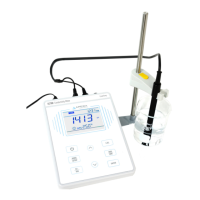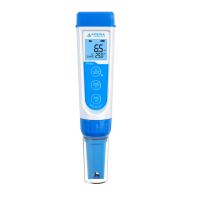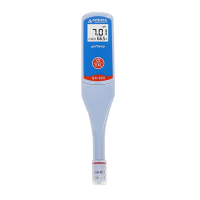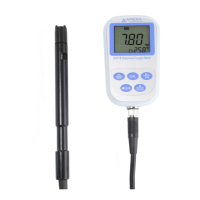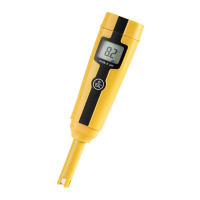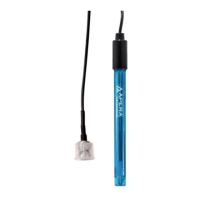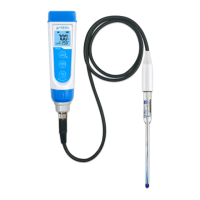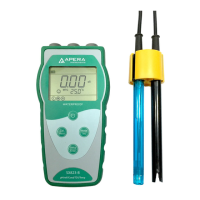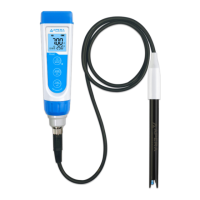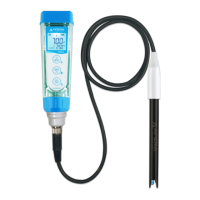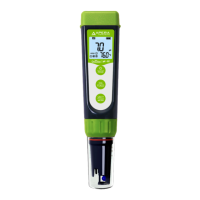4.4.3 pH isothermal measurement principle
According to the pH isothermal measurement principle, the closer the test sample’s temperature is to the
calibration solution’s, the higher the accuracy of the measurement. So this principle is recommended to
follow when conducting tests.
4.4.4 Restore to factory default
The instrument has a function to return to factory default setting, which can be set up in P1.2 (refer to
section 7.3). Returning to factory default setting is to restore the meter to the theoretical value (zero
potential pH is 7.00, slope is 100%), and set all the parameters to default settings (see appendix 1). When
the meter’s calibration or measurement is performing abnormally, users can use this function to let the
meter return to factory default mode, and conduct calibration and then test again. Please note that this
function is irreversible once used.
4.5 Maintenance of the pH Electrode
4.5.1 Daily maintenance
The soaking solution contained in the supplied protective vial is used to maintain the sensitivity of the glass
bulb and junction. Loosen the cap, remove the electrode and rinse in distilled water before taking a
measurement. Insert the electrode and tighten the cap after measurements to prevent the reference
solution from leaking. If the soaking solution is turbid or moldy, replace it with 3M KCL solution. (SKU:
AI1107). Soaking the probe in other brands’ storage solution could potentially cause damage to the probe.
The electrode should NOT be soaked in pure or distilled water, protein solution or acid fluoride solution.
In addition, do not soak the electrode in organic lipids.
4.5.2 Calibration buffer solution
For calibration accuracy, the pH of the standard buffer solution must be reliable. The buffer solution should
be refreshed often, especially after heavy use. We recommend 10-15 times of use before replacing the
pH buffers.
4.5.3 Protect glass bulb
The sensitive glass bulb at the front of the combination electrode should not come in contact with hard
surfaces. Scratches or cracks on the electrode will cause inaccurate readings. Before and after each
measurement, the electrode should be rinsed with distilled water. If a sample sticks to the electrode or it’s
contaminated, the electrode should be thoroughly cleaned using a soft brush and then rinsed with distilled
water. After that, soak it in the 3M KCL (SKU: AI1107) solution again for 6 hours.
4.5.4 Renew glass bulb
Electrodes that have been used over a long period will become aged. Soak the electrode in 0.1mol/L
hydrochloric acid for 24 hours, then wash the electrode in distilled water, then soak it in 3M KCL (SKU:
AI1107) storage solution for 24 hours.
The method to prepare 0.1mol/L hydrochloric acid: dilute 9mL hydrochloric acid in distilled water to 1000mL.

